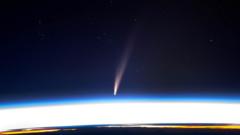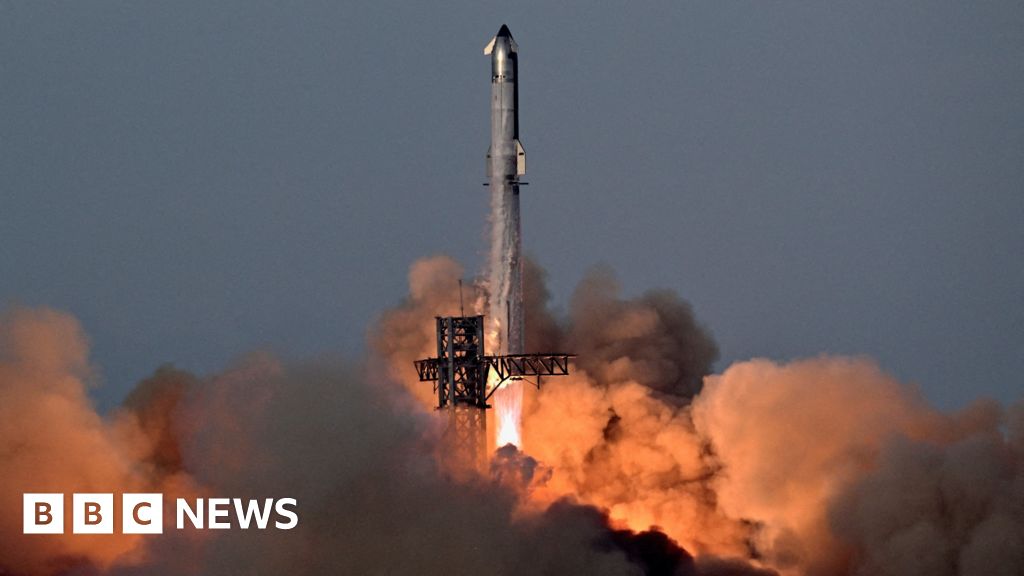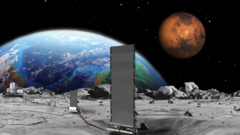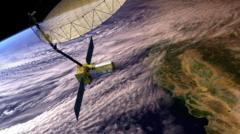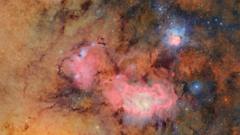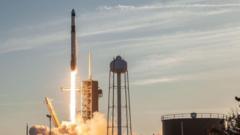Comet C/2024 G3 (Atlas) is making its historic approach, delighting skywatchers with the chance to witness it shining brightly, possibly as luminous as Venus, in Earth's atmosphere. NASA has disclosed that the comet reached its perihelion—the closest point to the Sun—on Monday, significantly influencing its brightness and visibility. Although precise locations for optimal viewing remain unpredictable, experts suggest that those in the southern hemisphere may have the best chances to observe this captivating astronomical phenomenon.
First detected last year by NASA's Asteroid Terrestrial-impact Last Alert System, this remarkable comet has been classified as a "sun-skirting" comet, with a projected distance of about 8.3 million miles from the Sun. Dr. Shyam Balaji, a researcher in astroparticle physics and cosmology at King's College London, emphasized the uniqueness of the comet by stating, “This is a once-in-160,000-years event.” He noted that the visibility of comets can fluctuate significantly based on their behavior and local observing conditions.
For those in the southern hemisphere, Dr. Balaji recommended looking towards the eastern horizon before sunrise and then switching to the western horizon after sunset, post-perihelion. However, he cautioned that predicting the brightness of comets is notoriously difficult, and many can end up being dimmer than anticipated. Observers in the northern hemisphere, including the UK, may face challenges due to the comet’s positioning relative to the Sun.
Skywatchers are advised to check local weather conditions online—such as through BBC Weather—to determine visibility in their area. Dr. Balaji also suggested finding darker locations free from light pollution, utilizing binoculars or small telescopes, and being cautious of the times around sunrise and sunset.
Meanwhile, excitement is building within the astronomical community, as astronomers continue to monitor the comet's trajectory. NASA astronaut Don Pettit recently shared a breathtaking photograph of Comet C/2024 G3 (Atlas) taken from the International Space Station, exclaiming the wonder of observing such a marvel from orbit.
This phenomenon highlights the intersection of technological advancements in monitoring space objects and humanity's enduring fascination with the cosmos.
First detected last year by NASA's Asteroid Terrestrial-impact Last Alert System, this remarkable comet has been classified as a "sun-skirting" comet, with a projected distance of about 8.3 million miles from the Sun. Dr. Shyam Balaji, a researcher in astroparticle physics and cosmology at King's College London, emphasized the uniqueness of the comet by stating, “This is a once-in-160,000-years event.” He noted that the visibility of comets can fluctuate significantly based on their behavior and local observing conditions.
For those in the southern hemisphere, Dr. Balaji recommended looking towards the eastern horizon before sunrise and then switching to the western horizon after sunset, post-perihelion. However, he cautioned that predicting the brightness of comets is notoriously difficult, and many can end up being dimmer than anticipated. Observers in the northern hemisphere, including the UK, may face challenges due to the comet’s positioning relative to the Sun.
Skywatchers are advised to check local weather conditions online—such as through BBC Weather—to determine visibility in their area. Dr. Balaji also suggested finding darker locations free from light pollution, utilizing binoculars or small telescopes, and being cautious of the times around sunrise and sunset.
Meanwhile, excitement is building within the astronomical community, as astronomers continue to monitor the comet's trajectory. NASA astronaut Don Pettit recently shared a breathtaking photograph of Comet C/2024 G3 (Atlas) taken from the International Space Station, exclaiming the wonder of observing such a marvel from orbit.
This phenomenon highlights the intersection of technological advancements in monitoring space objects and humanity's enduring fascination with the cosmos.

